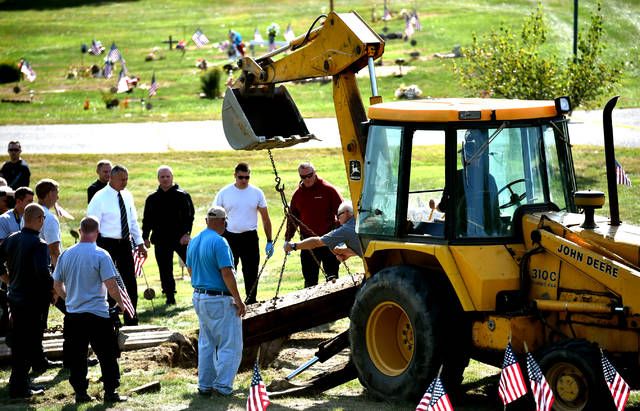Click here to subscribe today or Login.
What if we told you someone just invented a time machine and is intent on using it to go back in history to make right what once went so wrong?
Just imagine the excitement such a breakthrough would create.
Unfortunately, there are no time machines.
But there is a recent breakthrough that has the very real potential to reach back in time to deliver justice to victims in the present and expose some perpetrators hiding among us.
It’s all thanks to DNA and a new tracing technique that’s already solved some cold cases and could be used to solve many more, from coast to coast, in the coming weeks and months.
That includes cases like the infamous Zodiac Killer murders from the late 1960s in San Francisco and some enduring mysteries right here in Luzerne County that have puzzled authorities for decades.
First, more about the breakthrough, which involves using publicly available DNA on genealogy websites to find familial matches for DNA left behind by unknown suspects at crime scenes.
Once investigators and specialists can find a DNA match close enough to indicate a person is related to a suspect, they can create family trees using obituaries and other information.
They then can begin narrowing searches for culprits via age, geography and other factors.
It’s how they caught the alleged Golden State Killer in California for a string of crimes from the early 1970s to mid-1980s. He’s now charged with 12 murders, and more charges could be coming.
The same technology found a suspect last week in the brutal 1987 slayings of a young Canadian couple in Washington state.
For 30 years, authorities had no idea who was responsible. Then, they uploaded a digital file of DNA data from the crime scene to genealogy site GEDMatch.
Partial DNA matches led police to what turned out to be two of the suspect’s relatives and eventually authorities found their man, William Earl Talbott II, who is now charged with one of the murders and could be charged with the second.
Paul Holes is a retired California detective who worked the Golden State Killer case and helped come up with the idea to use genealogy DNA to hunt down suspects.
“Select cases will fall like dominoes,” he tweeted last week. “Others may take awhile. Some just won’t get cracked, even with this. But it is another tool to use and should give victims and victims’ families hope.”
This “tool” is in its infancy. In fact, the Washington case was the first time a murder suspect has been arrested using a service from DNA technology company Parabon NanoLabs that became available only three weeks ago, ABC News reports.
This brings us back home to Luzerne County, where authorities exhumed several unidentified bodies in 2016. One was identified in March thanks to a living relative who came forward and gave a DNA sample, an option not always available.
Three of the exhumed bodies remain shrouded in mystery. They include a male gunshot victim found in Bear Creek Township in 1979, a woman found doused in sulfuric acid in Black Creek Township in 1973, and an infant boy dumped in the West Side landfill in 1980.
There are countless other local cases, we’re sure, where the new DNA technique could help find answers, whether that be identifying bodies or tracking suspects.
Prosecutors near and far who are truly interested in justice have to at least try it.
— Times Leader





